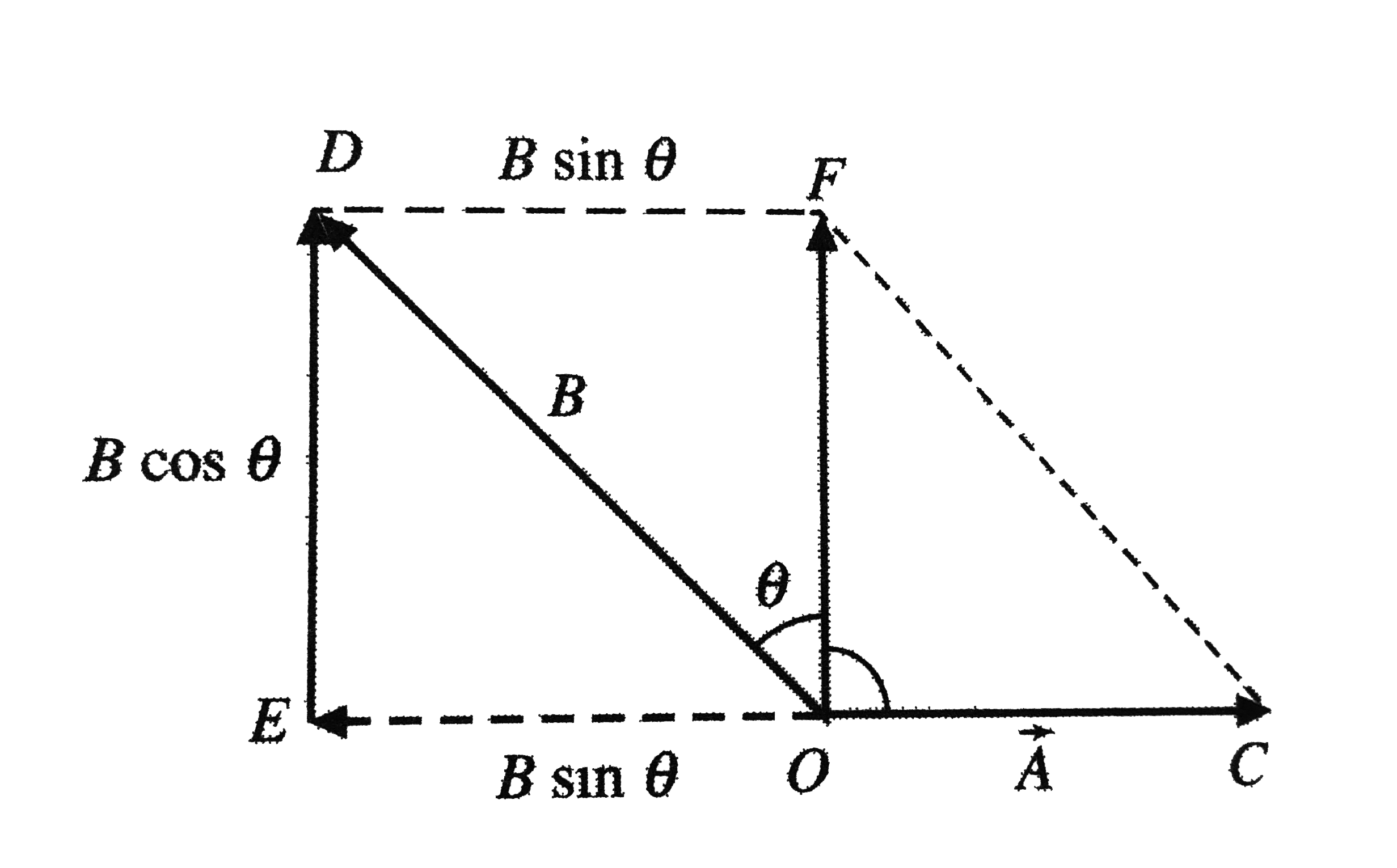The resultant of two vectors →A and →B is perpendicular to the vector →A and its magnitude is equal to half of the magnitude of the vector →B. Find out the angles between →A and →B.
 .
.
120∘
150∘
135∘
none of these
The correct Answer is:B
B2=√A2+B2+2ABcosθ
tan90∘=BsinθA+Bcosθ⇒A+Bcosθ=0
cosθ=−AB
Hence, from (i) B24=A2+B2−2A2⇒A=√3B2
⇒cosθ=−AB=−√32∵θ=150∘
Similar Questions
The resultant of →A and →B is perpendicular to →A. What is the angle between →A and →B ?
View SolutionThe resultant of →A and →B is perpendicular to →A. What is the angle between →A and →B ?
View SolutionIf for two vector →A and →B, sum (→A+→B) is perpendicular to the difference (→A−→B). The ratio of their magnitude is
View SolutionTwo vectors →Aand→B have equal magnitudes.If magnitude of (→A+→B) is equal to n times of the magnitude of (→A−→B) then the angle between →Aand→B is :-
View SolutionThe vectors →A has a magnitude of 5 unit →B has a magnitude of 6 unit and the cross product of →Aand→B has a magnitude of 15 unit. Find the angle between →Aand→B.
View SolutionThe vectors →A has a magnitude of 5 unit →B has a magnitude of 6 unit and the cross product of →Aand→B has a magnitude of 15 unit. Find the angle between →Aand→B.
View SolutionTwo vectors →A and →B are such that →A+→B=→A−→B. Then
View SolutionIf the vectors →a and →b are mutually perpendicular, then →a×{→a×{→a×{→a×→b}} is equal to:
View SolutionIf →aand→b are two vectors of magnitude 1 inclined at 120∘, then find the angle between →band→b−→a.
View SolutionThe magnitude of the vectors product of two vectors →Aand→B may be
View Solution
